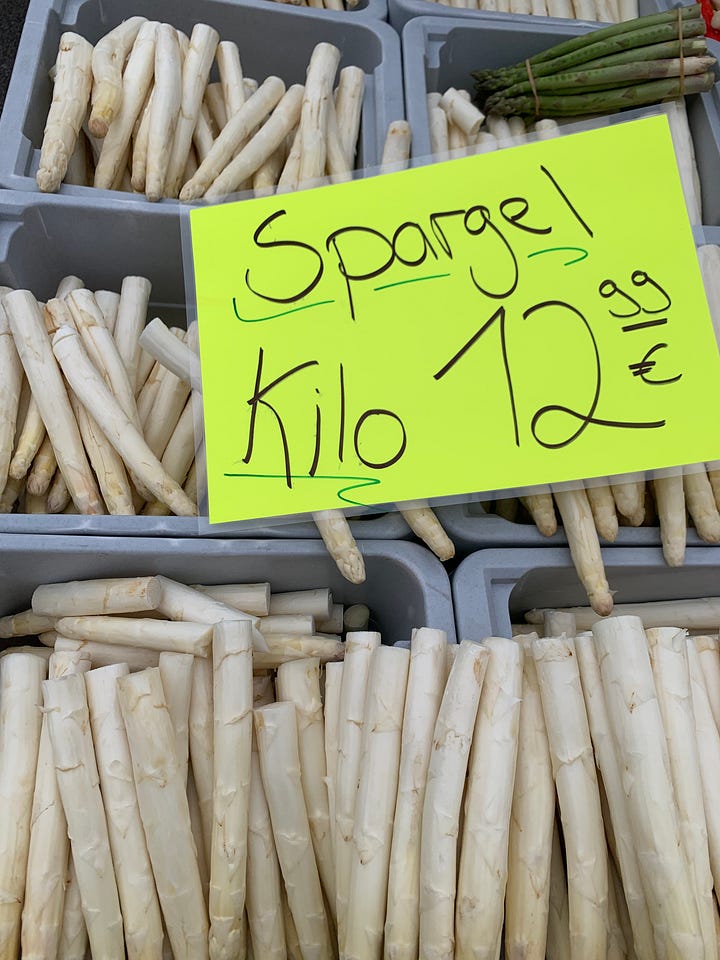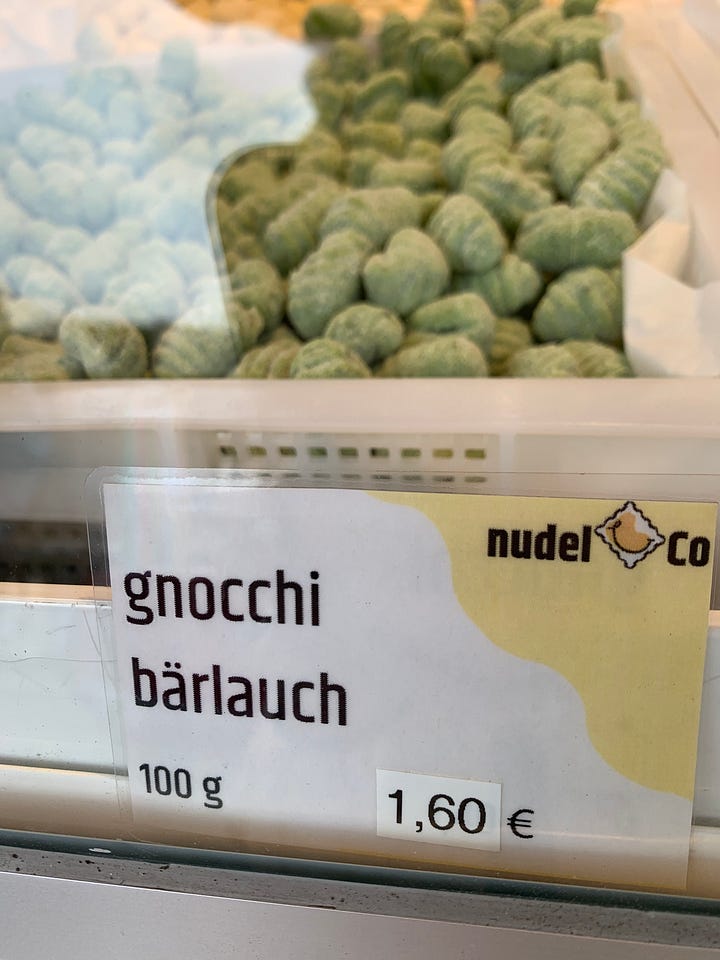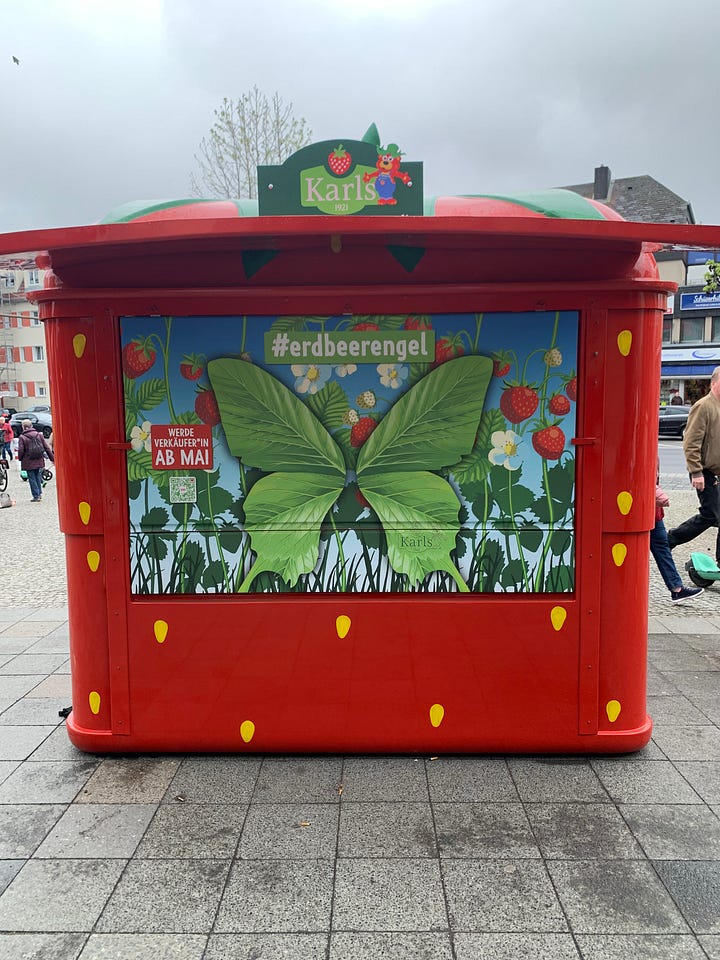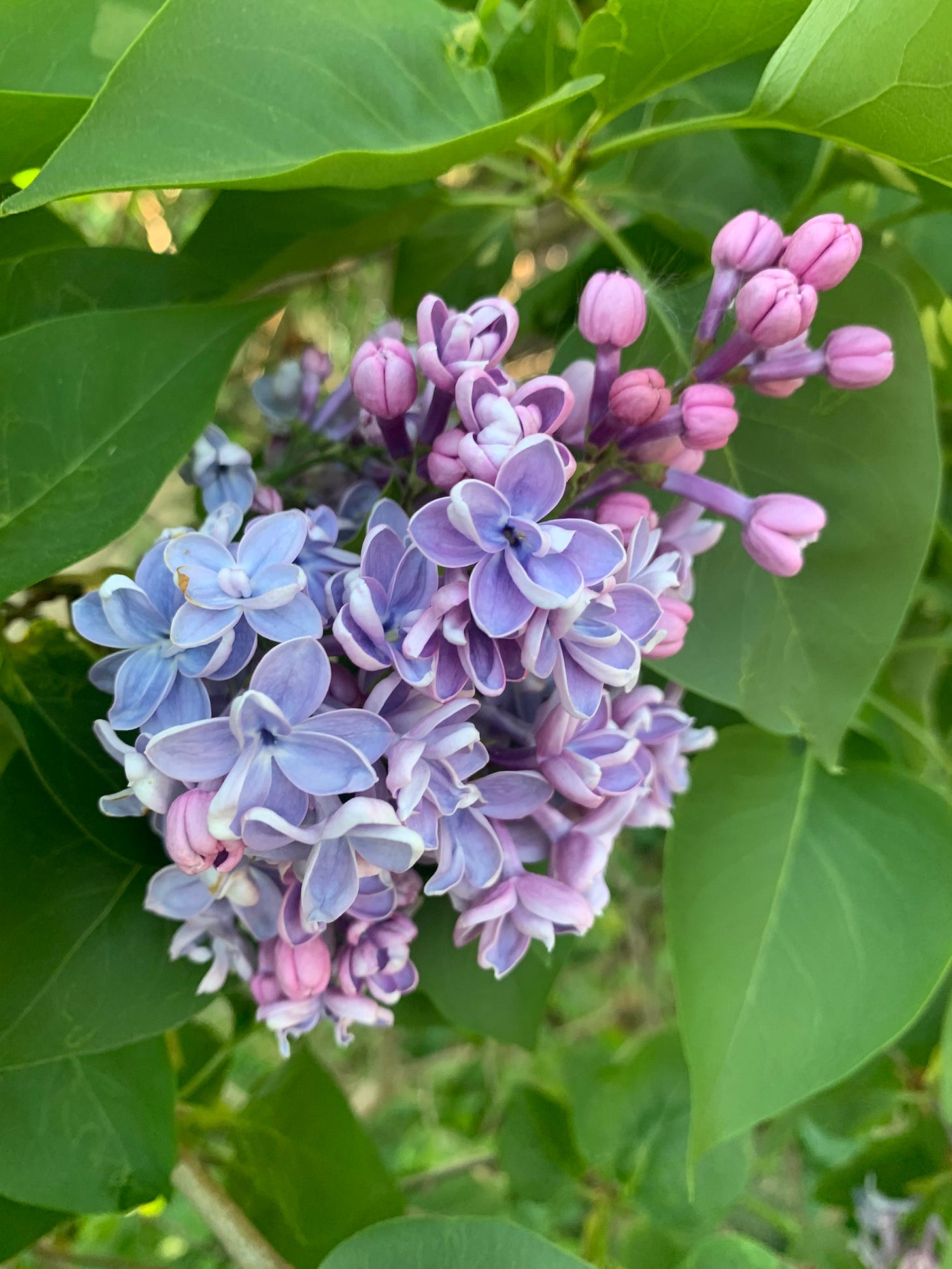Postcard from Berlin - Spring!
With less than three months left, I find another reason to stay: lilacs.
I hadn't expected the lilacs.
Nestor and I turned a corner and a glimmer of purple, almost eggplant, catches the corner of my vision. I looked up. In Durham, there are good reasons to look up - stray foul balls from a Bulls game for example - but lilacs are not one of them. At my family home, though, I played for days with my sisters and brother in the splay fingered trunks of immense lilacs. Towering trees nestled tight under mammoth whispering pines. A typical child remembrance of something larger than it was, I'd thought. Now it's a mid April afternoon forty years later in a different country and I see a lilac tree.
The calendar flipped to our three month mark and Berlin beckons. Schau, she says, waving her giant paw at the white asparagus that has arrived at the wochenmarkt. Bärlauch (bear leak) that my German tutor Uli says can be found in nearby parks fills local tortellacci, flavors gnocchi and is available as a pesto. Spring menus at the local restaurants offer iced and fruity drinks, homemade lemonades. Karl's stands (450 in Mecklenburg-Western Pomerania, Schleswig-Holstein, Saxony, and Berlin!) appear overnight. April holidays - Good Friday, Easter and Easter Monday - offer a long weekend reprieve. Spring is here.




And now, lilacs.
Lilacs (fliedebaum) are actual trees here, exactly as I recall them from my childhood. Upwards of eight feet tall and wide as a Fiat with spindly branches that arc out from a narrow waist at the ground. Are they branches or trunks? I say "trunks" and my husband thinks "branches". Either way, the tree begins almost horizontal before curving skyward with lip-shaped leaves. Above the green canopy are the buds that become clusters of tiny, distinct petals.
Lilacs were introduced into Europe from the Ottoman empire toward the end of the 1500s. Their history here is longer than that of "American" lilacs which came to the States a century later. Planting guides say lilacs are hearty, thriving in zones 3-7 but ever since she gave it to me, Janet's lilac remains modest. It blooms tentative and sparse, for ten-ish days every March. I asked Ashley, a local master gardener, what she thought. She told me what I already knew: lilacs don't thrive in the Piedmont area of North Carolina. Cut it back, Ashley advised.
When I arrived in Berlin, I'd been worried that the January and February gloom might swamp me. Winter in New England - my only point of comparison when it came to cold and dark - was Ethan Frome level depressing. But that didn't happen. Even when I was sacked out with the flu, Berlin offered pockets of sun. New UBahn stations to swoon over, art exhibits of fashion inspired by Old Masters, pretty whispers of snow. The City kept coming through for me.


Spring here peeks shyly around corners before coming out. When it’s her turn to go to the ball, Spring hugs the walls and loiters at the punch table, shifting from foot to foot. She doesn't realize everyone wants to dance with her. Her lack of awareness, too, feels very typical. Berlin is nothing if not authentic. The high school and college kids with perfect eyebrows and natural plastic faces are hyper aware of their looks. But no one else seems to be. Whatever you wear is fine. Wide leg pants|jeans and white tennis shoes are the style but people don't care if you choose something else. There is a total lack of pretension. It's as refreshing as the Berlinerluft that the city is known for. The same air that is probably so good for the lofty lilacs I see everywhere now.
I was reluctant but my husband cut back Janet’s lilac. Ashley was right. Last spring it finally bloomed with greater zeal than we’d seen in years. This year the lilac will be long dormant by the time we arrive back in Durham in July. Will it ever grow palatial like the ones of my Connecticut childhood? Next spring, I'll be there to keep watch.
Read + Loved:
The Girl With The Louding Voice by Abi Daré. A recommendation from my sister Caroline. A young Nigerian girl’s mother dies and she becomes destined to become the bride of a much older man. Or does she? Adunni is the hero we all need right now. In keeping with minimal book purchases while we’re here, I listened to this book via Libby. The narrator is Adjoa Andoh whose range of accents and voice inflection is extraordinary. I’ll seek her out again. 5⭐
As readers know this newsletter is free and I’m not working right now so am somewhat limited in how many paid Substacks I can subscribe to. So I’m not a paid subscriber to The Vajenda, Dr Jen Gunther’s superb source of science-based information on perimenopause but I will be in the future. Good stuff here!
Recommended Link:
I’m absorbing museums, galleries and architecture by the acre here in Berlin. But I don’t want that beautiful habit to vanish when I come back to the US so I started subscribing to Colossal, “an online art magazine that celebrates contemporary art and visual culture across a wide range of creative disciplines.” Exhibits, new artists and art to buy, support, share.
Yoko Ono’s most recent version of Wish Tree, that she has been installing since 1996. Participants are invited to write wishes for peace on small pieces of paper and tie them to the branches of the trees. - video from my visit to Ono’s retrospective at The Gropius Bau, April 20.
Thank you for being here. If you liked anything above this line, please click the ❤️ below, share to your social of choice or reStack it here (click “circle-arrow icon”) on Notes.







I love hearing about your time abroad. It's been awhile since I've thought of lilacs, but, wow, they are such special flowers. The scent really is unlike anything else.
so much cool and beauty. I don't have an association with lilacs-but you remind me that certain flowers can be a portal to memories.